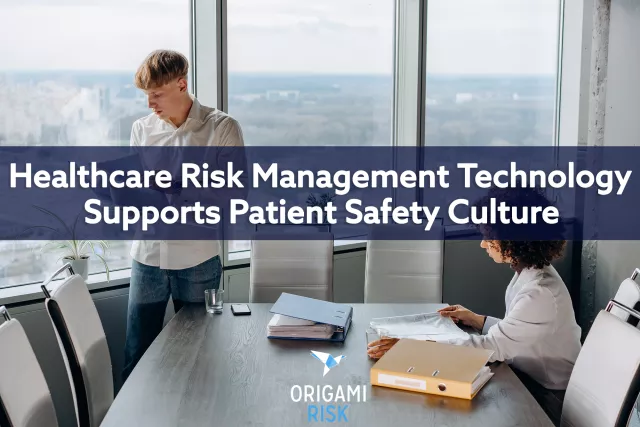The following article was originally published on the Patient Safety & Quality Healthcare (PSQH) website.
The key to establishing a transformative safety culture begins with leadership and filters through the entire organization. "Leaders are key to instilling a commitment to safety in all members of the organization to create a positive safety culture," writes Dana Costar in "Cross-Cutting Patient Safety Topics/Practices" from Making Healthcare Safer III: A Critical Analysis of Existing and Emerging Patient Safety Practices (AHRQ, 2020). "When a deviation in safety processes or practices is observed, staff speak up or take action to contain the problem and/or resolve the issue. In the event that an adverse event or near miss does occur, incidents are reported without fear of blame or punishment."
Unfortunately, fear of retribution can stand in the way of getting buy-in from frontline workers. And reporting, though an essential element, is only one of many hurdles to be cleared as a patient safety culture matures.
Risk management technology supports a safety culture by providing options that help lower or eliminate barriers to reporting. Additionally, a platform that includes integrated workflow automation and analysis tools is also essential to reducing the likelihood of adverse events occurring in the future.
Adverse Event Reporting
Improvements in incident reporting come down to simplifying the process. Cumbersome and time-consuming incident-reporting processes further decrease the likelihood of reporting.
Improved efficiency, applicability, and accuracy
Reporting processes are often perceived as overly burdensome. Some reporting forms require an undue amount of manual data entry; others include questions not applicable to the type of event being reported. Such shortcomings contribute to rushed, inaccurate, or incomplete reporting. A risk management system with configurable reporting forms that include elements such as contingent questions, drop-down code lists, and predictive field population contributes to fewer data entry errors and reduces the amount of time staff is away from patients and urgent duties.
Overcoming resistance to reporting
Allowing for anonymous reporting can help to minimize the fear of retribution. This can, in turn, lead to greater honesty in reporting. On the other hand, staff members may wish to stay up on the progress being made in the review or investigation of a reported event. The right risk management technology will include incident reporting capabilities that allow for both options — named or anonymous — based on the reporter's preference.
Reporting adverse events where (and when) they occur
To increase reporting levels, organizations can also benefit from a solution that allows for reporting via an online portal and mobile device. This allows staff to capture incident details as soon as possible, even when a workstation or internet access is unavailable. This can contribute to reduced lag time and helps investigations get underway more quickly.
Automation, Analysis, Action
Leadership must move with purpose once incidents are reported. This means alerting those tasked with review and root cause analysis, strategically analyzing aggregated healthcare data, and sharing the results with stakeholders. Yet many organizations fail to follow through on these steps, which can discourage employees from reporting, as they see no evidence that it makes a difference.
Effective automation
A lack of perceived response to a reported incident can be a barrier to event reporting by healthcare professionals. One step toward fostering change is to alert key parties after the entry of a patient safety event. Integrated, rules-based automation in a healthcare risk management solution can be set to generate alerts to designated members of staff for swift action and increased accountability.
At subsequent stages, the system can send automated updates to the event report. And after the root cause analysis or other steps have been carried out, the reporter can see how exactly the incident report helped move the needle.
Applying analytics
With an automated system, organizations can analyze adverse event data to uncover trends and spot outliers. For example, the right solution will include integrated tools for applying root-cause methodologies — e.g., fishbone, RCA2, and the 5 whys — to inform strategic decision-making and enhance program quality. When corrective actions bring about noticeable change, staff are encouraged to continue contributing.
Finding the Right Solution
While healthcare organizations may use similar best practices, frameworks, and methodologies, no two approaches to patient safety will be the same. Likewise, the right healthcare risk management solution must be the right fit for each healthcare organization looking to change its patient safety culture. It must also be configurable enough to match existing processes and capable of handling future needs.
